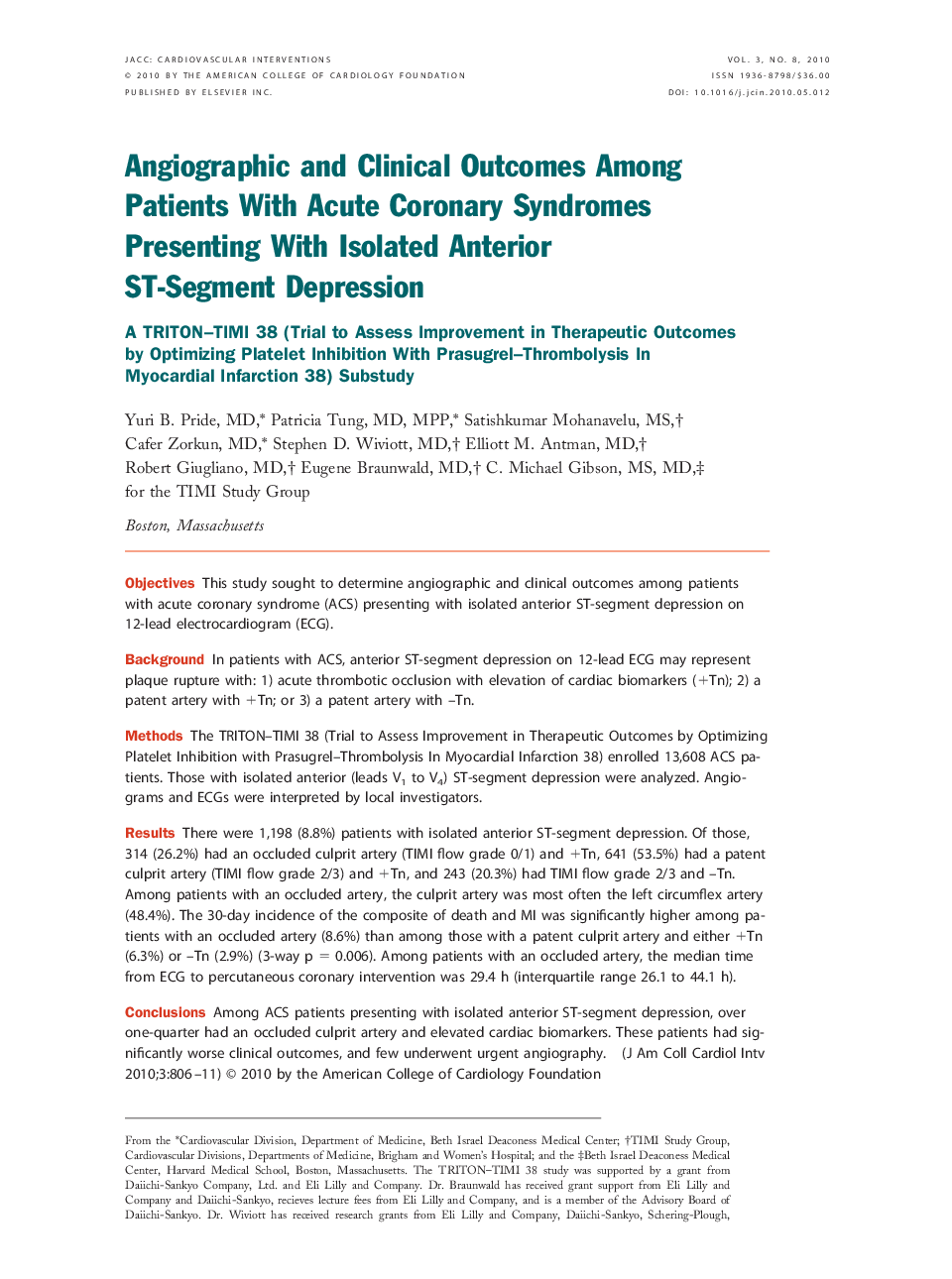| Article ID | Journal | Published Year | Pages | File Type |
|---|---|---|---|---|
| 2941805 | JACC: Cardiovascular Interventions | 2010 | 6 Pages |
ObjectivesThis study sought to determine angiographic and clinical outcomes among patients with acute coronary syndrome (ACS) presenting with isolated anterior ST-segment depression on 12-lead electrocardiogram (ECG).BackgroundIn patients with ACS, anterior ST-segment depression on 12-lead ECG may represent plaque rupture with: 1) acute thrombotic occlusion with elevation of cardiac biomarkers (+Tn); 2) a patent artery with +Tn; or 3) a patent artery with –Tn.MethodsThe TRITON–TIMI 38 (Trial to Assess Improvement in Therapeutic Outcomes by Optimizing Platelet Inhibition with Prasugrel–Thrombolysis In Myocardial Infarction 38) enrolled 13,608 ACS patients. Those with isolated anterior (leads V1 to V4) ST-segment depression were analyzed. Angiograms and ECGs were interpreted by local investigators.ResultsThere were 1,198 (8.8%) patients with isolated anterior ST-segment depression. Of those, 314 (26.2%) had an occluded culprit artery (TIMI flow grade 0/1) and +Tn, 641 (53.5%) had a patent culprit artery (TIMI flow grade 2/3) and +Tn, and 243 (20.3%) had TIMI flow grade 2/3 and –Tn. Among patients with an occluded artery, the culprit artery was most often the left circumflex artery (48.4%). The 30-day incidence of the composite of death and MI was significantly higher among patients with an occluded artery (8.6%) than among those with a patent culprit artery and either +Tn (6.3%) or –Tn (2.9%) (3-way p = 0.006). Among patients with an occluded artery, the median time from ECG to percutaneous coronary intervention was 29.4 h (interquartile range 26.1 to 44.1 h).ConclusionsAmong ACS patients presenting with isolated anterior ST-segment depression, over one-quarter had an occluded culprit artery and elevated cardiac biomarkers. These patients had significantly worse clinical outcomes, and few underwent urgent angiography.
